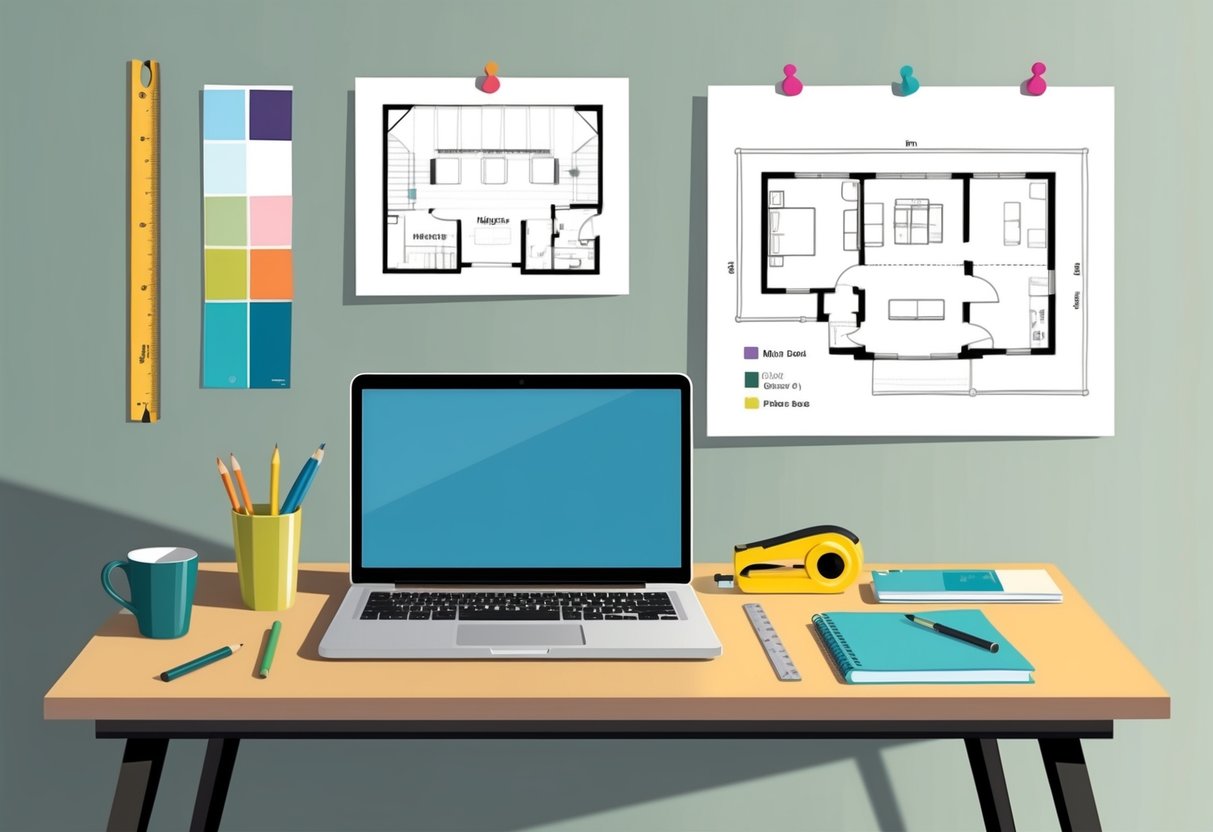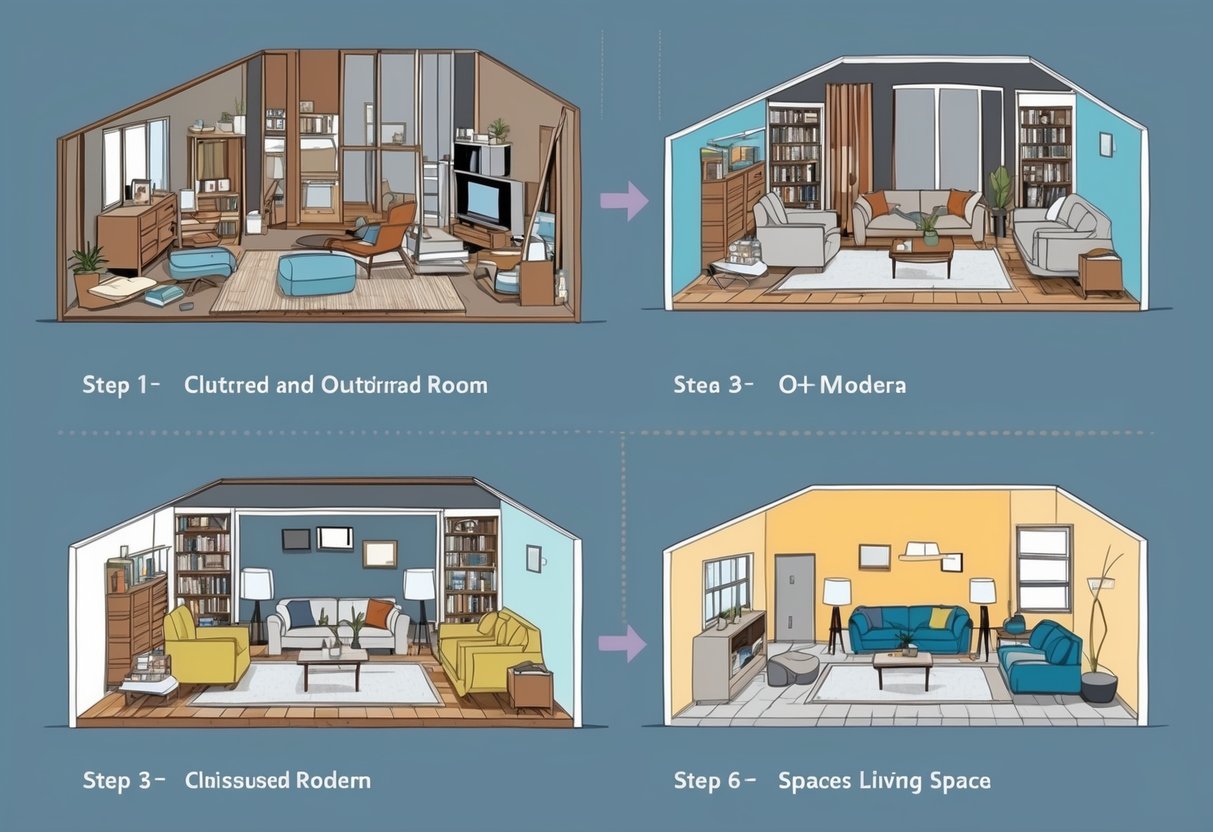
Embarking on a home remodeling project can feel overwhelming, but a clear plan reduces stress and keeps your project on track.
With thoughtful planning, everyone involved—from homeowners to contractors—can avoid common pitfalls and delays.
A stress-free remodel starts by setting realistic goals, establishing a budget, and finding a reliable home renovation contractor.
Careful research and comparing portfolios will make it easier to select the right professionals for the job.
Homeowners who approach their renovation with a solid checklist are more likely to enjoy the process and see their vision come to life, as supported by guides from reputable home improvement experts such as those found in this helpful step-by-step home renovation guide.
Mapping out a renovation timeline and breaking the project into manageable phases is essential for keeping everything organized and on schedule.
Defining Your Remodeling Goals

The foundation of a successful home remodeling project depends on careful consideration of what changes are desired, the specific areas to focus on, and the main outcomes expected.
By examining needs, outlining the project scope, and clarifying objectives, homeowners can set themselves up for a smoother renovation process.
Identifying Needs and Priorities
Determining needs and priorities is essential before any plans are made.
Homeowners should assess current pain points in their living space, such as outdated kitchens, insufficient storage, or cramped bathrooms.
A practical approach is to walk through each room and list what works well and what does not.
Consider family size, lifestyle, and any growth or changes expected in the near future.
Immediate needs, such as fixing unsafe structural issues, should be highlighted.
Prioritizing allows for smarter allocation of resources.
Create a table or checklist ranking each aspect from “must-have” to “nice-to-have.”
This step helps ensure that critical areas receive attention, which leads to a more focused and satisfying remodeling project.
Setting Project Scope
Setting the project scope means establishing what your home remodeling will include and what will be left unchanged.
Detailed scoping helps control costs, prevent scope creep, and maintain realistic expectations throughout the home project.
List all rooms or areas being considered for renovation.
Define whether the project involves a full remodel or targeted updates, such as installing new flooring, updating cabinetry, or expanding an area.
Knowing the boundaries early can help streamline contractor discussions and improve timelines.
Discuss limitations, like budget or local permit requirements, with relevant professionals.
Aligning expectations with available resources can avoid headaches later.
Tools like a written scope statement or visual floor plan provide clarity that benefits both homeowners and contractors.
Establishing Clear Objectives
Clear objectives translate broad intentions into measurable goals for the remodeling project.
These objectives guide everyday decisions and keep the project on track.
Objectives should answer specific questions: What should the new space accomplish? Are you aiming for improved functionality, increased home value, or enhanced energy efficiency?
Choose goals that are specific, measurable, attainable, relevant, and time-bound (SMART).
For best results, write objectives and display them somewhere visible during the home project.
Objectives written in straightforward terms—such as “add 60 square feet to the kitchen” or “improve bathroom lighting”—make it easier to track progress and communicate with your team.
Resources like this remodeling project guide can offer additional strategies for clarifying objectives.
Creating a Realistic Budget
Setting a realistic budget for a home remodeling project involves careful cost estimation, smart budget allocation, and planning for surprises.
A well-thought-out approach helps homeowners avoid delays, cost overruns, and unnecessary stress during renovation.
Estimating Costs
A detailed cost estimate forms the foundation of any successful home improvement plan.
Begin by listing all anticipated expenses, including materials, labor, permits, and design fees.
Gather itemized bids from multiple contractors for comparison, as pricing can vary significantly.
Breaking costs down by room or project phase can make estimates clearer.
Take advantage of online resources to research typical prices for similar remodeling projects in your area.
Always ask contractors for detailed quotes rather than vague ballparks.
Homeowners should also consider small items like delivery fees, demolition, disposal, and cleanup.
Using a spreadsheet or budgeting app helps keep everything organized and easily updated.
Budget Allocation Strategies
Allocating the budget requires prioritizing essential upgrades and considering which features will most impact property value and quality of life.
It’s helpful to divide the budget into specific categories such as structural repairs, fixtures, finishes, and professional fees.
A common technique is the 50/30/20 rule: allocate 50% for major work like structural changes, 30% for finishes and fixtures, and 20% for labor and permits.
Homeowners often find it best to spend more on high-use areas like kitchens and bathrooms.
Comparing needs versus wants ensures that wants don’t overshadow critical repairs.
By reserving funds for high-traffic rooms, people can often boost return on investment.
For more advice, see strategies suggested in this renovation budgeting guide.
Preparing for Unexpected Expenses
No matter how carefully a home remodeling budget is planned, unexpected costs can arise.
Always set aside a contingency fund; most experts recommend earmarking 10–20% of the total budget to cover surprises such as hidden water damage, outdated wiring, or structural issues.
It’s important not to touch these reserved funds unless truly necessary.
A contingency buffer can prevent halting progress or making compromises when problems surface mid-project.
Planning for the unexpected helps remodeling projects stay on schedule and minimizes stress, as noted by renovation experts at GM Creative Solutions.
Careful advance planning and reserving a portion of the budget for unforeseen costs is an essential home improvement strategy.
Homeowners stay prepared and keep their renovation plans on track by building flexibility into their finances.